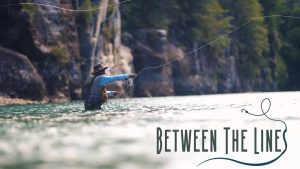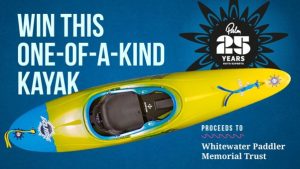With more options and better paddle-assist technology, there couldn’t be a better time for paddle sports to embrace the E-volution.
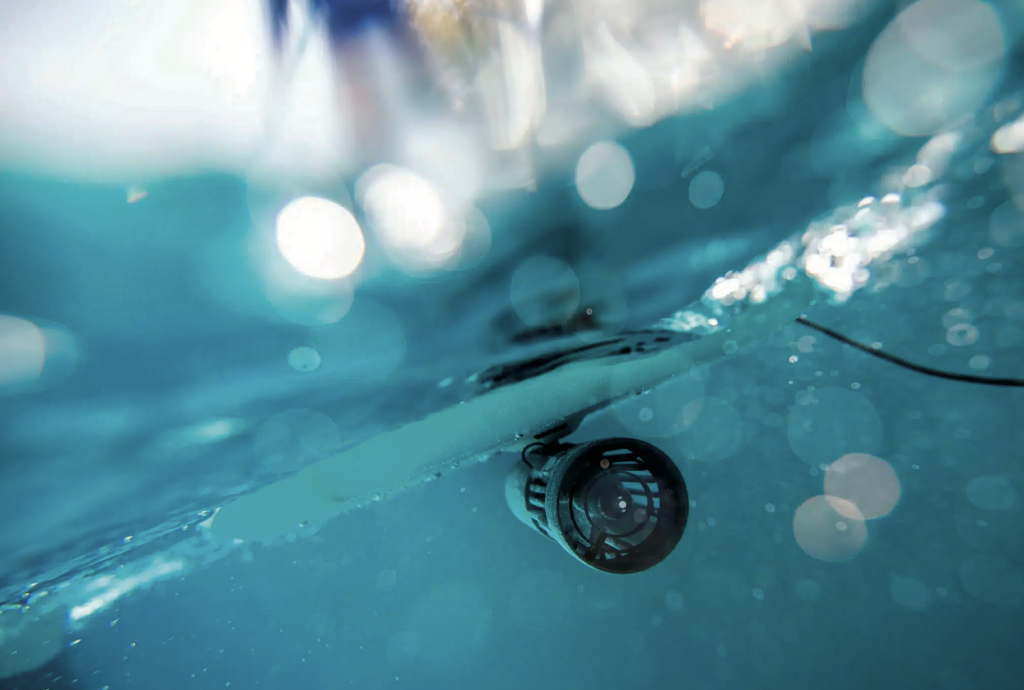
©Kahe Pod
Paddle sports have long given a way to be in nature’s thrall, to find that magic moment where all that matters is your next stroke. When it is just you and the water, the only sound a huff of breath and the echo of a paddle’s cadence. Lately, there is a new sound: a gentle hum and buzz as paddle sports rapidly embrace an E-revolution.
The growing interest in paddle-assisted technology was evident this year at the 2023 Paddle Sports Show in Strasbourg, France, as increasing numbers of brands joined established pioneers in exhibiting refined designs for motors large and small. Czech company eMOGI showcased the recreational and rescue benefits of their composite Aluki kayak. F-One debuted their new e-fin and spoke of developing technology that would allow the motor to gauge when assistance was needed. Bote Boards blend the power of a motorized fishing boat with a stand-up paddleboard feel in their Micro Skiff line, while Native Watercraft’s award-winning Propel TitanX comes “electronic-ready,” recognizing that the ability to add a motor makes kayak fishing accessible for even more anglers.
“As electric technology continues to improve, this corner of the market will only grow, bringing greater versatility, appeal, and adaptability to all paddle sport disciplines.”
Brands such as Tahe Outdoors, Coastco, and SIPA Boards have long recognized the potential of motorized paddleboards and kayaks and have already put work into developing innovations. As electric technology continues to improve, this corner of the market will only grow, bringing greater versatility, appeal, and adaptability to all paddle sport disciplines. Among those set to benefit most? The young, the elderly, and those who lack the skill or fitness to handle the physical demands of paddling, from changing conditions to upper body strength.
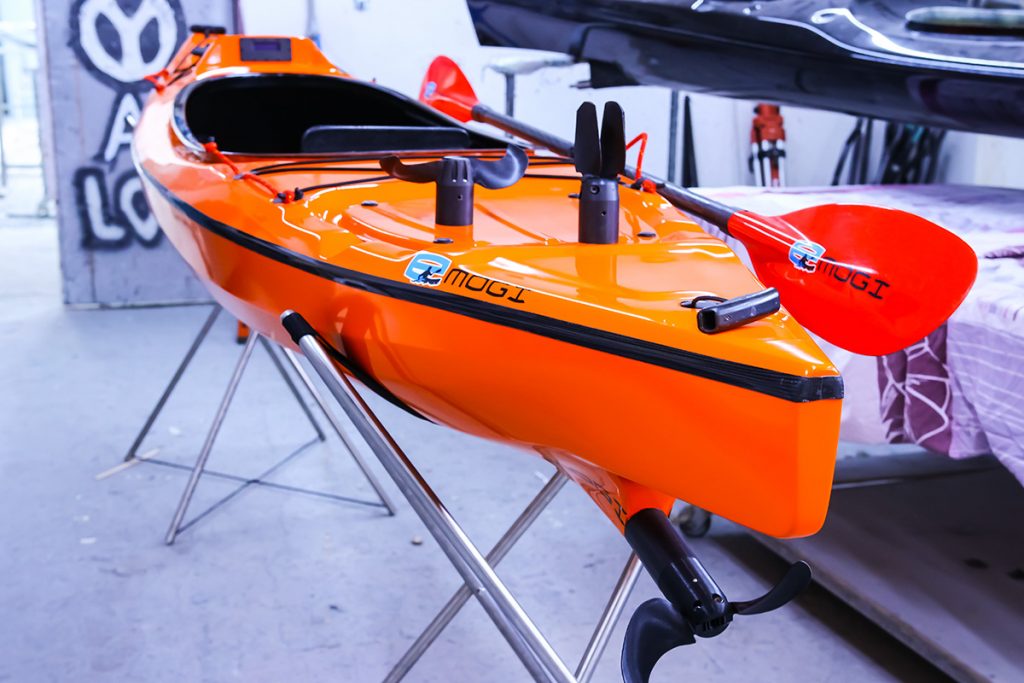
© E-Mogi – Composite Aluki kayak
“It {motorized paddle sports} democratizes paddling and allows people of different ages, abilities, and fitness levels to enter, participate, and grow their skill sets,” says Miha Rausl of Sipa Boards. Paddle-assist technology makes hauling gear or kids easier and enables safer and more enjoyable paddling experiences for people with disabilities or limited mobility, including older adults. This increased accessibility provides a critical access point as the industry looks to diversify further, targeting those who currently find paddling too difficult or daunting.
“The higher cost and current novelty factor of motorized paddle sports may drive business to rental shops, tour services, and retailers. “
“I think it {paddle-assistive technology} can be a good upsell or add-on and bring in more users and new customers into the sport for sure, especially those willing to spend more for more luxury and convenience on the water,” says Graham Ketcheson of Kayak Distribution. Given battery systems can cost as much as a boat or board, paddle-assistive technology is a much-needed boost when sales are tough.
“If it makes being self-powered less intimidating for people to get into it {paddle sports}, I see it as a plus,” says Jackson Kayak Marketing Director Emily Jackson. It’s worth remembering that not all users need to purchase boats or boards. The higher cost and current novelty factor of motorized paddle sports may drive business to rental shops, tour services, and retailers.
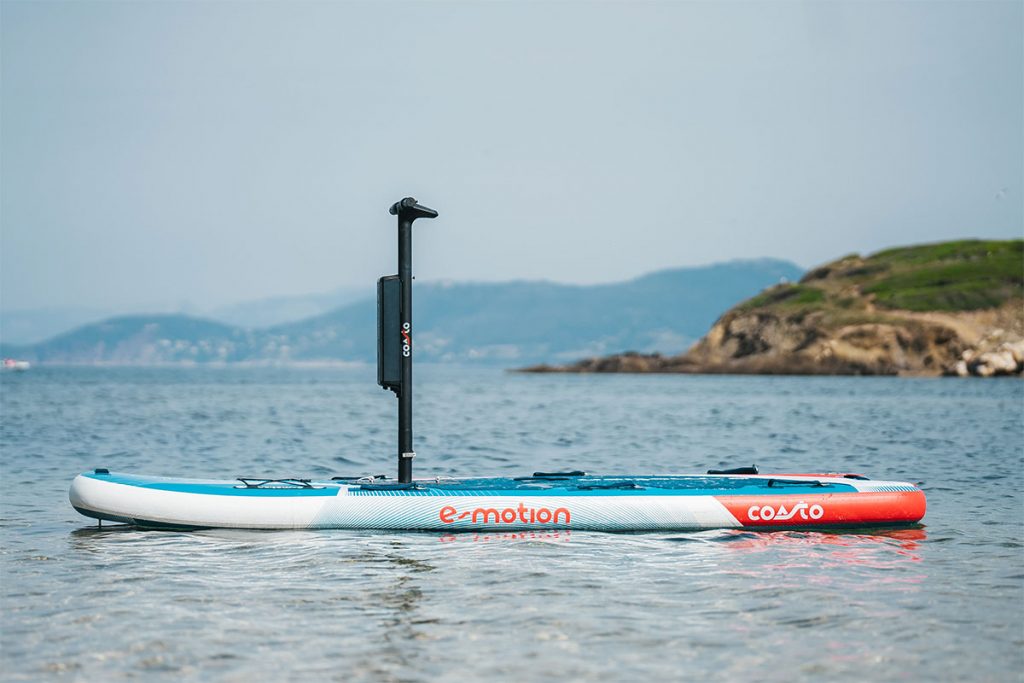
©Coastco
“In the US, e-bikes are outselling classic bikes by huge margins,” continues Miha. “A little bit of boost can make a huge difference and with uphill cycling now becoming a thing for families, the industry is starting to boom.” Equally intriguing are opportunities for those looking to go further or faster. For the fitness-inspired, the power boost doesn’t change how hard you work, only how far or fast you can go within a given timeframe.
Despite the versatility and appeal, conflict in the cycling industry indicates that not everyone is equally entranced. For all the advantages, e-powered paddle craft detracts from what many feel lies at the heart of their paddling discipline: A retreat to nature, the ability to be truly present, to connect with the elements.
“Though e-technology will attract new users, more paddlers also mean a greater impact on our waterways and access points, whether trash, noise, or crowds.”
“For Starboard, our core and focus is on using the energy of the wind, wave and your own strength to promote an active lifestyle. We have not moved into E-drive related products as it doesn’t fit with our core principles and we feel it detracts away from the authenticity of our sports,” explains Starboard SUP Brand Manager Ollie O’Reilly.
Though e-technology will attract new users, more paddlers also mean a greater impact on our waterways and access points, whether trash, noise, or crowds. Other concerns center around the experience of other users and environmental impact. An advantage of non-motorized kayaks and paddleboards is the ability to navigate sensitive ecosystems with minimal disturbance and harm to aquatic environments.
“As e-technology improves, it will continue to drive interest in paddle sports, bringing much-needed numbers and a broader range of participants.”
Whether the joy paddle sports bring feels compromised or complemented by electric-assisted technology, it won’t go away any time soon—or at all. Rather, expect innovations in user-friendly designs, lighter-weight materials, and longer-lasting batteries. As e-technology improves, it will continue to drive interest in paddle sports, bringing much-needed numbers and a broader range of participants. However, as numbers grow, so does the need for infrastructure and education on best sport practices so that making paddle sports more inviting doesn’t isolate those already here.
All are entitled to time on the water, no matter how they access it. Making paddle sports accessible and enjoyable to as many as possible should always be the ultimate goal. In this sense, E-technology is a gift we are ready to embrace.


